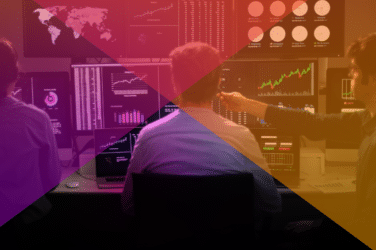
Asset managers’ spending on sources for mobile device geolocation data is growing at more than 40% annually as international coverage and quality improves according to consultancy Opimas.
In a report, Generating Alpha with Mobile Device Geolocation Data, Opimas founder and chief executive Octavio Marenzi said asset managers are spending more than $5bn (€4.1bn) each year on alternative data, which is expected to grow by almost 30% annually.
“While mobile device geolocation data currently represents a relatively small segment of the alternative data market, it is expected to grow quickly, exceeding $250m by 2020,” added Opimas.
The total of $250m includes spending on data science, predictive analytics, IT infrastructure, and related data management as well as data sources. Spending on data sources is growing at more than 40% annually.
Marenzi continued that a very good alternative dataset can generate up to 10 times its cost in returns, while a less good one will generate between two and three times.
“With mobile geolocation data, Opimas believes that the figure is closer to the latter number,” said the report. “This multiple will improve over time as the quality and granularity of geolocation data increase and asset managers gain familiarity with the data and how to best employ it.”
The buyside use of mobile geolocation data is expected to increase as there is more international coverage; as 5G, the newest mobile network protocol, rolls out and provides greater accuracy; and quality improves. The vast majority of asset managers are expected to buy mobile data from analytics providers rather than purchasing the raw data which would require a huge amount of analysis.

Octavio Marenzi, Opimas
“We are only aware of a single asset manager doing this, Two Sigma, one of the most sophisticated quant hedge funds,” added Marenzi. “There are some other quant funds who source the raw data and then license noise reduction and normalisation models from analytics vendors.”
For example last week in the US, Gordon Haskett Research Advisors, a boutique equity research firm, announced a partnership with Alpha Hat, which provides real-time foot traffic intelligence covering retailers, restaurants, hotels from anonymized mobile devices to investors.
John Argenti, director of research at Gordon Haskett Research Advisors, said in a statement: “We are very excited to partner with Alpha Hat as we continue to arm our analysts with very unique data sets, to enhance their already highly regarded fundamental work.”
The boutique has also been developing data sets such as credit card transaction data, monthly consumer survey data and proprietary pricing studies.
Richard Lai, founding partner of Alpha Hat, said in a statement: “As a former buyside research analyst, I saw firsthand how being able to source, harness and incorporate alternative data into one’s investment process can enhance an investor’s understanding of company performance and improve returns.”
Mike Mayhew, founder of investment research consultancy Integrity Research, said in a blog that the the partnership highlights that smaller firms can benefit from alternative data. He continued that coverage of the consumer sector, dominated by digital marketing and digital sales, is unfeasible without access to alternative data.
“Firms including Morgan Stanley, UBS, and Wolfe Research have been investing in this space for some time,” Mayhew added. “However, the implementation of research unbundling brought on by MiFID II has prompted an increasing number of firms to look at ways to differentiate their research offerings by integrating alternative data to drive better insights.”
MiFID II, the European Union regulation which went live this year, requires research payments to be unbundled from trading commissions to reduce conflicts of interest. Asset managers can choose to either pay for research themselves, which the majority have done, or agree a research budget with clients.
Morgan Stanley Research said in a new report that a new era of data-harnessing technologies will change how businesses collect, analyze, and act on information.
#AI, #IoT and #AugmentedReality are about to reinvent how industries utilize data—and could dramatically reimagine our cities, farms, factories and hospitals. https://t.co/dsMGy8wQC7
— Morgan Stanley (@MorganStanley) April 30, 2018
“In financial services, data technologies can be applied to risk management, portfolio management and trade clearing, improving efficiency,” said the bank.
For investors, the new Data Era opens up opportunities to generate returns since each new computing era often means a change in the leader board. Brian Nowak, who covers U.S. Internet companies for Morgan Stanley Research, said in the report: “We believe companies with the largest data sets (users, engagement, purchases, touch points) and the cloud providers are the best positioned Internet companies to capture growth in the Data Era.”
Andrew Haldane, chief economist at the Bank of England, said in a speech this month that the UK central bank set up its own data analytics division four years ago as the use of data analytic techniques in finance and macroeconomics holds great promise.
In his speech, Andy Haldane talks about “big data” and how it has been used to benefit research both inside and outside the Bank of England. https://t.co/OUXj7o4Ud9 pic.twitter.com/kUnWYbvH7S
— Bank of England (@bankofengland) April 30, 2018
“Over that period, data has become the new oil; data analytic techniques have become the oil extraction and refining plants of their time; and data companies have become the new oil giants,” Haldane added. “Yet economics and finance has, to date, been rather reticent about fully embracing this oil-rush.”
He gave examples of the promising use of data such as MIT’s “Billion Prices Project” which uses data from over 1,000 online retailers in around 60 countries to collect 15 million prices on a daily basis.
“This approach has been found to offer a timelier (and cheaper) reading on consumer prices than traditional surveys,” he added. “Online price data have also been found to improve short-term forecasts for inflation in certain markets.”
In addition the UK Office for National Statistics is exploring the use of ‘web scraping’ to complement existing price collection methods. So far, the ONS has collected 7,000 price quotes per day for a group of grocery items, which is larger than the current monthly collection for those items in the consumer price index. The Bank and the ONS have also been developing a more comprehensive set of data on flows of funds between institutions.
“Do portfolio reallocations by institutional investors affect asset markets and have knock-on effects for spending?” said Haldane. “Answering questions like this helps, for example, when assessing the efficacy of quantitative easing.”
Another example is data on music downloads from Spotify being used as an indicator of sentiment.
“Intriguingly, the resulting index of sentiment does at least as well in tracking consumer spending as the Michigan survey of consumer confidence,” added Haldane. “And why stop at music? People’s tastes in books, TV and radio may also offer a window on their soul.”
Haldane continued that he is interested in using a gaming environment to provide new data on behaviour as there are already multi-person games with primitive economies which allow players to exchange goods and monies.
“These include EVE Online and World of Warcraft,” he added. “Some economists have begun to use gaming technologies to understand behaviour.”
He gave the example of Steven Levitt, the author of Freakonomics, using gaming platforms to understand the demand curve for virtual goods and explore behaviour in a virtual economy, including players’ reactions to policy intervention.
“At least in principle, a virtual economy would allow policymakers to engage in their own reinforcement learning, speeding up their process of discovery about the behaviour of the complex economic and financial system,” said Haldane.






